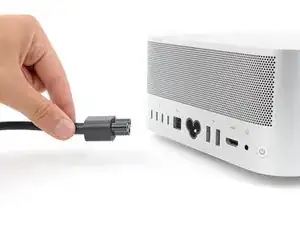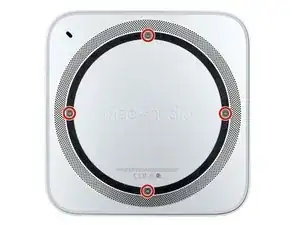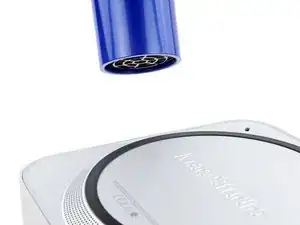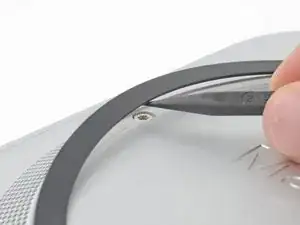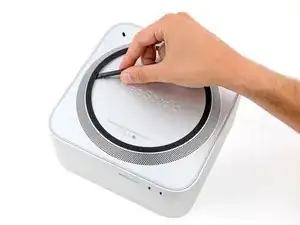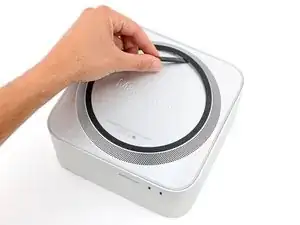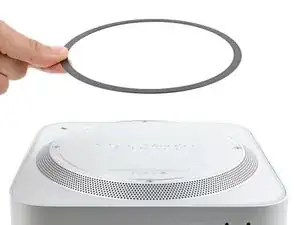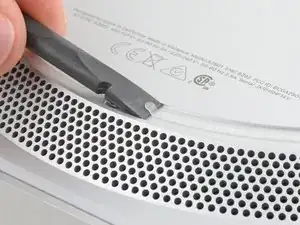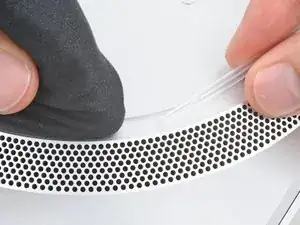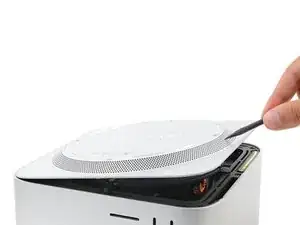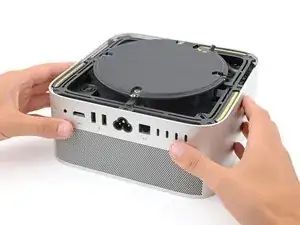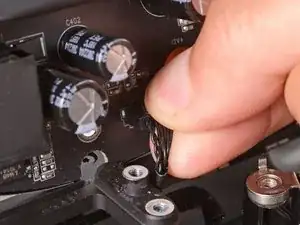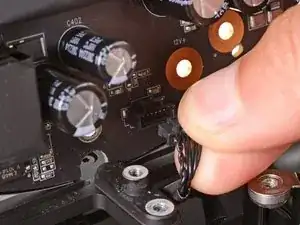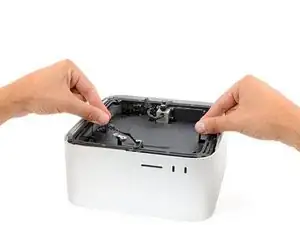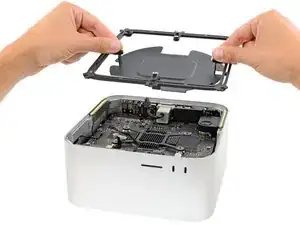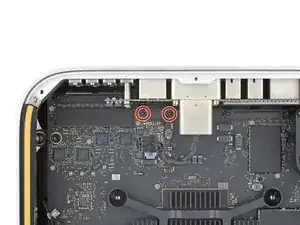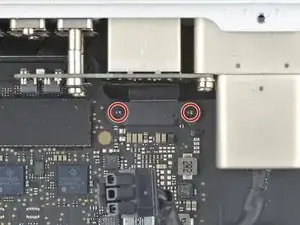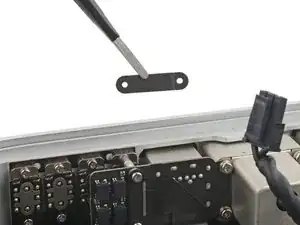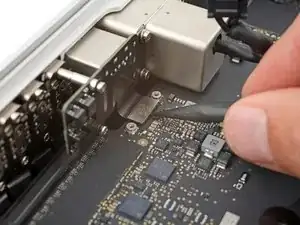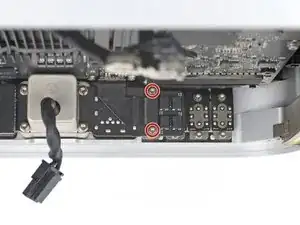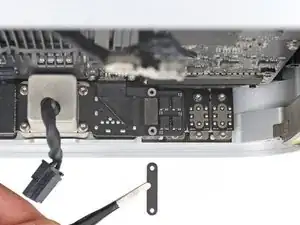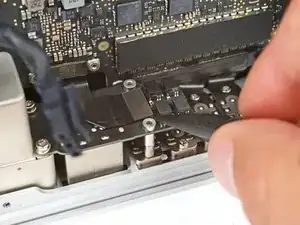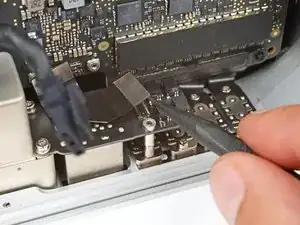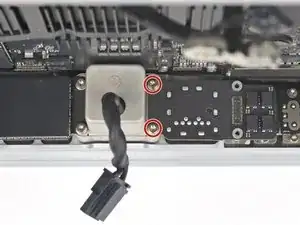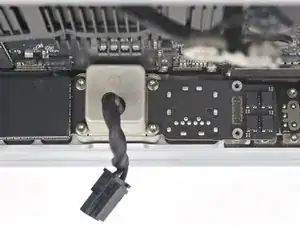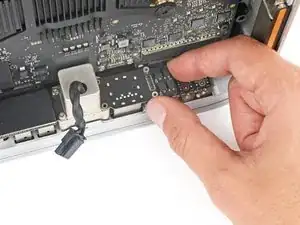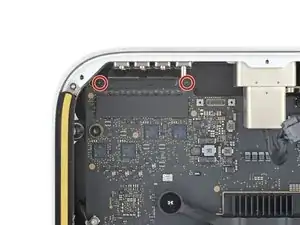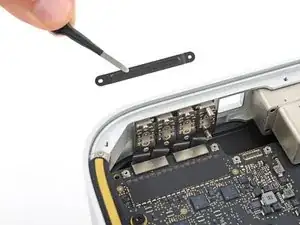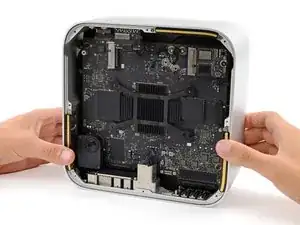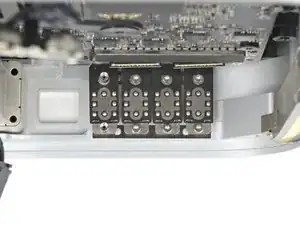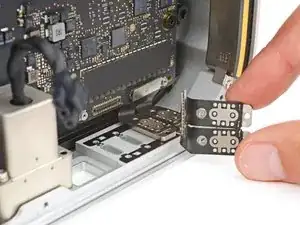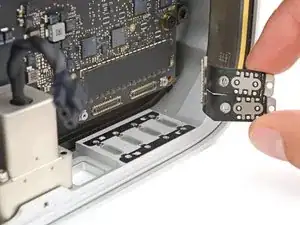Introduction
Use this guide to replace the back Thunderbolt 4 ports in your Mac Studio (2023).
Note: You can only replace the two inner and two outer ports (or all four), as they're connected by flex cables. You can't replace individual ports.
If you're having trouble connecting devices to the back Thunderbolt 4 ports or cables fit loosely in them, it may be time to replace the ports.
Before starting this repair, read through Apple's troubleshooting article and try the software and cleaning solutions that don't require taking your device apart. Make sure to test your cables with a different device to confirm the issue is with one of the ports, and not the cables themselves.
Tools
Parts
-
-
Flip your Mac Studio over and lay it down so the bottom faces up and the SD card slot and two front USB‑C ports are facing you.
-
-
-
Heat an iOpener and lay it over one of the bottom cover screws for two minutes to soften the adhesive near the screw—this is where you'll insert a spudger in the next step.
-
-
-
Insert the point of a spudger under the pad's inner edge, near the screw you applied heat to in the previous step.
-
Use the spudger to lift the pad and separate the adhesive.
-
-
-
Insert the flat end of a spudger under the pad.
-
Slide the spudger under the entire pad to separate the remaining adhesive.
-
-
-
If the adhesive strips are still sticky, you can reuse them.
-
Use the flat end of a spudger and your fingers to scrape up and remove the old adhesive strips.
-
Use isopropyl alcohol and a microfiber cloth to remove the old adhesive residue.
-
Apply the new adhesive strips to the bottom cover and remove their liners.
-
Firmly press the bottom cover screw pad into its recess to secure it.
-
-
-
Insert the point of a spudger in one of the bottom cover's ventilation holes and lift the cover until you can grab it with your fingers.
-
Remove the bottom cover.
-
-
-
Use a T10 Torx screwdriver to remove the six screws securing the power supply:
-
Four 6 mm‑long screws
-
Two 7 mm‑long screws with washers
-
-
-
Firmly hold the power supply with one hand and lift up the edge near the power cord port.
-
With your free hand, pinch the head of the power cord port connector to unclip it and pull straight down to disconnect the cable.
-
-
-
Carefully tilt the power supply away from the power cord port so it's at a 90-degree angle.
-
Keep the power supply tilted up for the next step.
-
-
-
With your free hand, pinch the head of the power supply connector to unclip it and pull straight away from the socket to disconnect the cable.
-
-
-
Use a T6 Torx screwdriver to remove the eight screws securing the internal frame:
-
Seven 5 mm‑long screws
-
One 4 mm‑long screw
-
-
-
Slowly lift the internal frame straight up and remove it, making sure no cables get snagged.
-
-
-
Use a T3 Torx screwdriver to remove the two 2 mm‑long screws securing the ethernet board cable cover.
-
Use tweezers or your fingers to remove the cover.
-
-
-
Use a spudger to pry up and disconnect the ethernet board cable press connector from the logic board.
-
-
-
Carefully stand up your Mac Studio so the SD card reader and two front USB-C ports are facing up.
-
-
-
Use a T4 Torx screwdriver to remove the two 11 mm‑long screws securing the right side of the ethernet board and its cover.
-
Use tweezers or your fingers to remove the cover.
-
-
-
Insert the point of a spudger under the bottom right corner of the ethernet board press connector and lift up to disconnect it.
-
Remove the cable.
-
-
-
Use a T6 Torx screwdriver to remove the two 20 mm‑long screws (with washers) securing the ethernet board.
-
-
-
Use a T3 Torx screwdriver to remove the two 2 mm‑long screws securing the back Thunderbolt 4 port cable cover.
-
Use tweezers or your fingers to remove the cover.
-
-
-
Use a spudger to pry up and disconnect both Thunderbolt 4 cable press connectors from the logic board.
-
-
-
Use a T5 Torx screwdriver to remove the six 5 mm‑long screws securing three of the ports.
-
Use a T7 Torx screwdriver to remove the two 8 mm‑long standoff screws securing the remaining port.
-
Partially tighten all four screws on a set of ports.
-
Lay your Mac Studio down and plug a cable into each port to ensure proper fit and alignment, adjusting the ports as necessary—the cable should be easy to insert and remove.
-
With both cables plugged in and the port in position, fully tighten the screws.
-
Unplug all cables before continuing with reassembly.
-
-
-
Use your fingers to lift the two inner or outer ports out of their recesses and remove them.
-
Repeat the process to remove the two other ports.
-
To reassemble your device, follow these instructions in reverse order.
Take your e-waste to an R2 or e-Stewards certified recycler.
Repair didn’t go as planned? Try some basic troubleshooting, or ask our Answers community for help.



